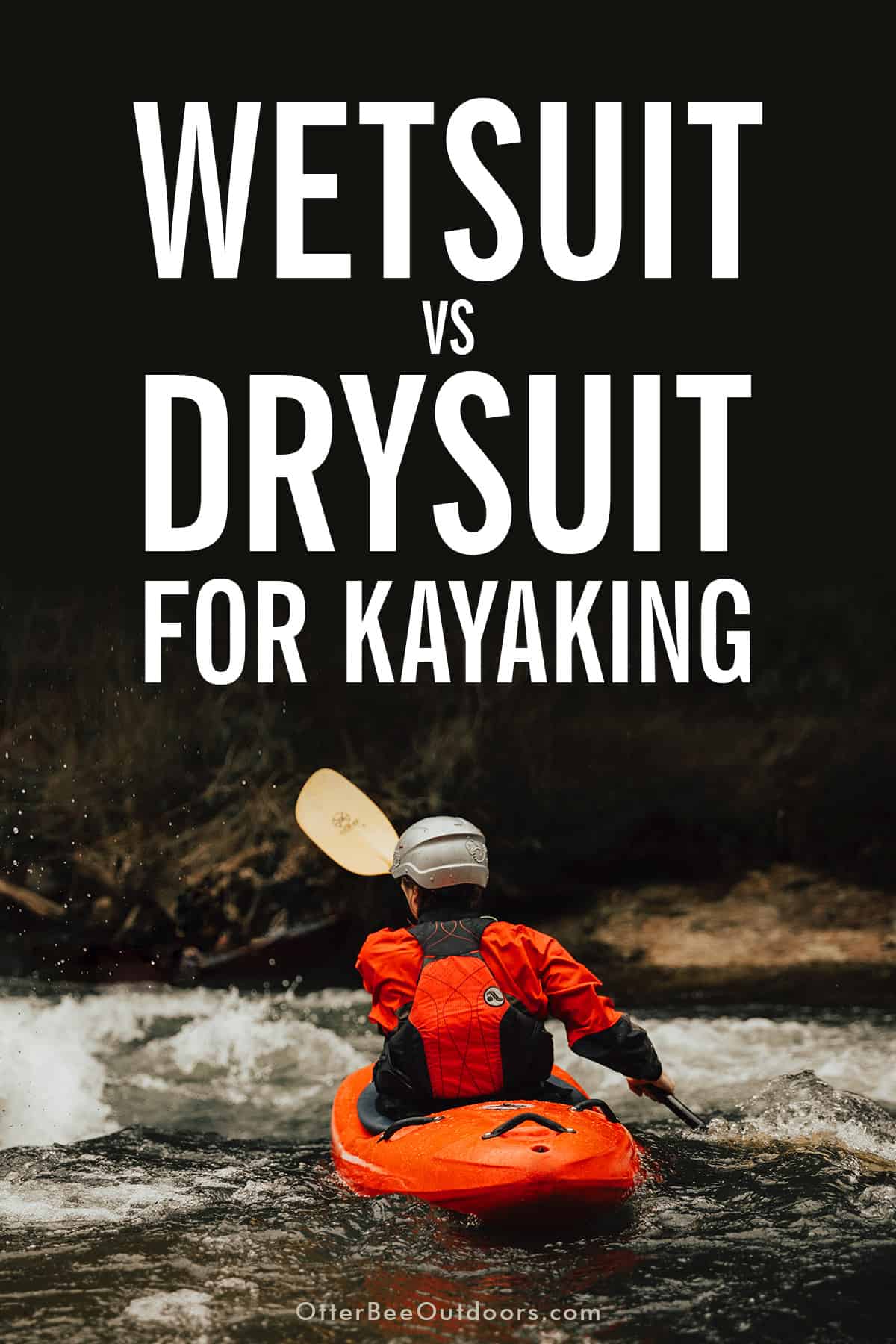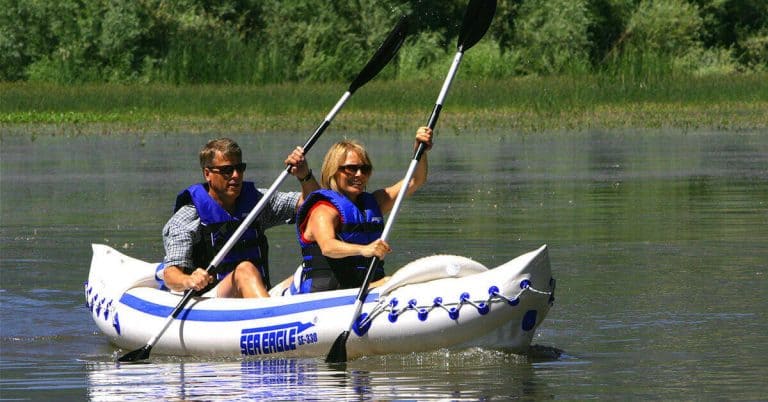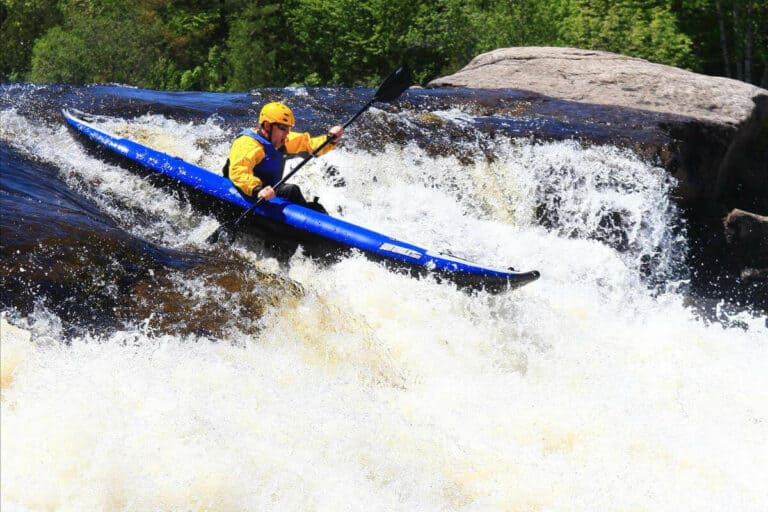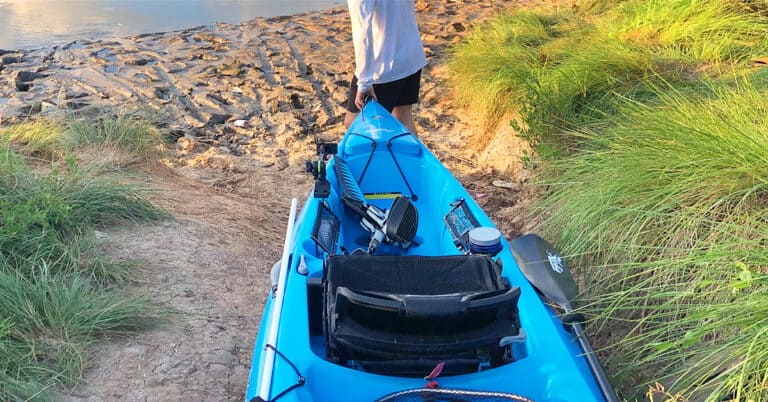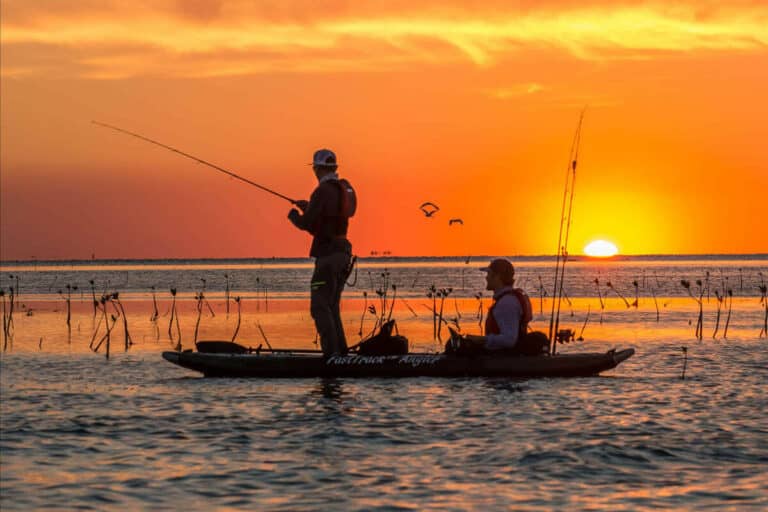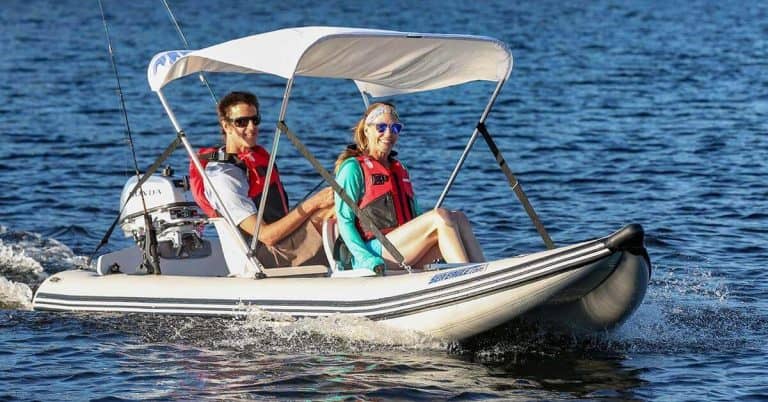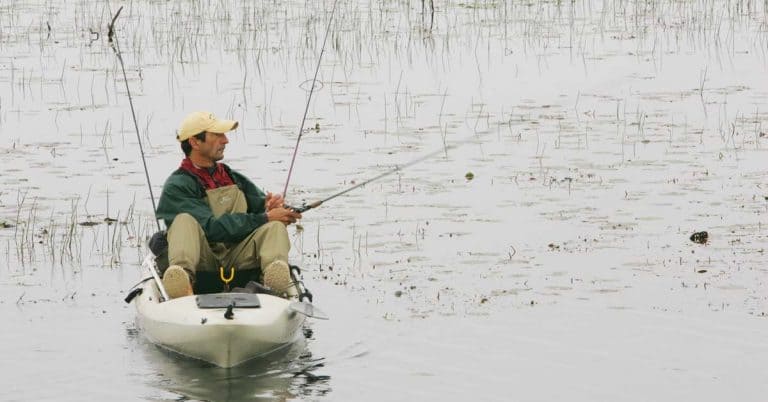Disclosure: I am compensated for purchases made through some links on this site. Click for details.
The use of your kayak can be extended beyond warmer months into the cold of winter by wearing a kayak wetsuit or kayak drysuit. As long as the water hasn’t frozen over, you can get out there and paddle.
The choice between a kayaking wetsuit or drysuit primarily depends on air and water temperatures. A kayak drysuit is the best choice in winter when the air and water temperatures are both cold. Whereas, a wetsuit is best when the water is cold but the air is warm.
The main thing is this. Whether you choose a wetsuit or drysuit, you must be able to withstand the four stages of cold water immersion that lead to incapacitation and death. The shock from cold water immersion can occur in water as warm as 77oF. 1
How Do Wetsuits Work
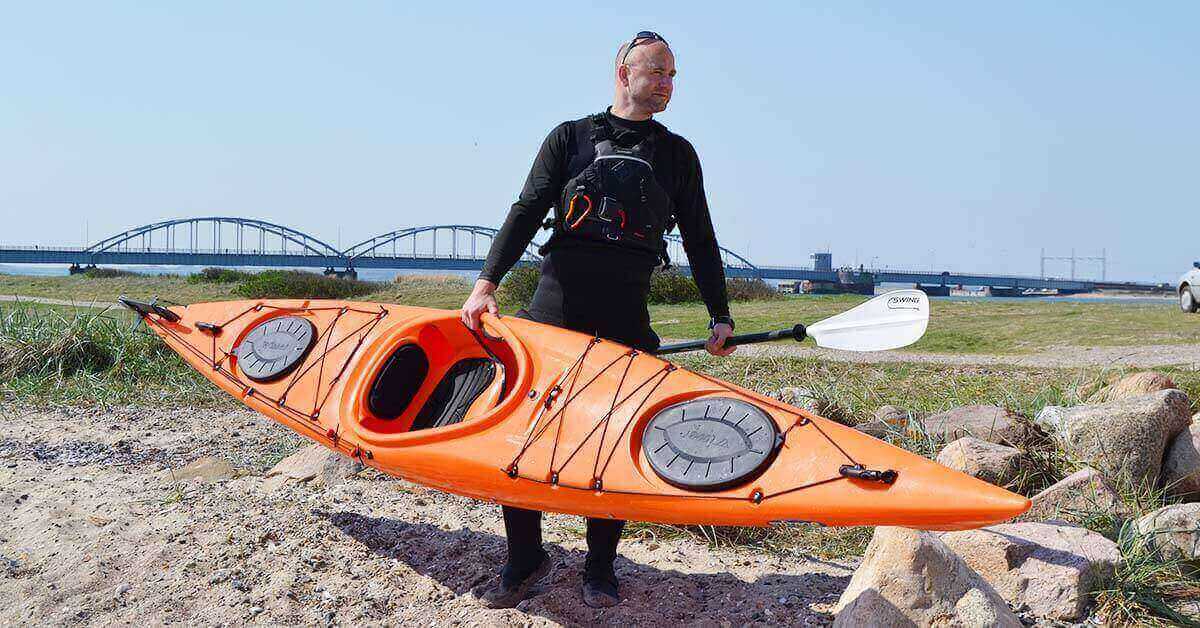
Wetsuits are often one-piece suits made from neoprene foam. They come in a variety of suit types…
- Full-Body Wetsuit
- Hooded Full-Body Wetsuit
- Shorty Wetsuit / Springsuit
- Long John/Jane Wetsuit
- Short John/Jane Wetsuit
- Wetsuit Tops
- Wetsuit Vest
- Wetsuit Bottoms
These tight-fitting suits are designed to allow a thin water layer between you and the neoprene suit. As your body heats up the water layer, the bubbles in the neoprene foam and water layer create a thermal barrier that prevents heat loss.
Your desired wetsuit type and neoprene thickness (0.5 mm to 6+ mm) will start with the water temperature. To know what thickness you need, check out my Wetsuit, Thickness, and Temperature Guide.
When To Use A Wetsuit For Kayaking
A wetsuit provides the minimum protection needed when kayaking in cold water. Its best use for kayakers is when the water is cold but air temperatures are warmer.
A couple of examples would be kayaking a stream or river with water fed from a dam. Water nearest the dam can be close to 50 degrees Fahrenheit even during the summer. Large lakes with great depths may also be cold while surface temperatures are warm.
Kayaking Wetsuit Pros and Cons
Pros:
- Low cost.
- Thin wetsuits are flexible and relatively non-restrictive.
- They come in a variety of thicknesses (0.5 mm to 6+ mm) with thermal abilities that can protect you from cold water from 75oF down to less than 42oF.
- They come in a variety of suit types for more or less skin coverage.
- A damaged wetsuit with a cut, hole, or tear is not fully compromised and can still provide warmth.
Cons:
- Neoprene is harmful to the environment.
- A wetsuit is difficult to put on and take off, especially when wet. The thicker the wetsuit the greater the difficulty.
- Wetsuits only work in narrow temperature ranges that are determined by the thickness of the neoprene.
- More than one wetsuit may need to be purchased if you plan to kayak in waters of different temperature ranges.
- Thicker wetsuits are restrictive. It feels like you are fighting against the suit when paddling.
How Do Drysuits Work
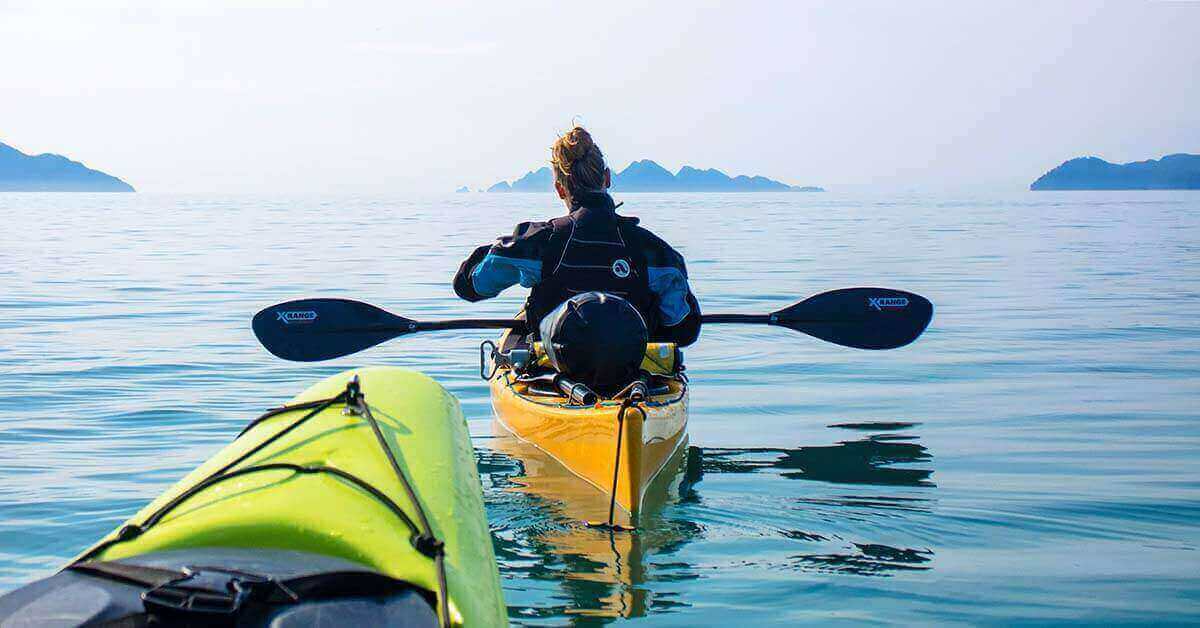
Drysuits are loose-fitting full-body suits made of waterproof materials with rubber gaskets at the neck, wrists, and if sockless at the ankles. These gaskets provide a water-tight fit.
These kayaking suits are designed to keep you dry and unlike kayak wetsuits, warmth is adjusted by wearing long underwear and other insulating layers underneath.
Drysuits in combination with the thermal layers worn underneath provide the greatest thermal protection for kayakers paddling in cold environments.
When To Use A Drysuit For Kayaking
Drysuits are used when the water and the air temperature are both cold though the main focus is to protect yourself from cold water immersion.
“Cold” is a subjective word so let’s turn to scientific research for defining cold water when kayaking. Research in Canadian provided by the USCG Commercial Fishing Vessel Safety Program shows that the shock from cold water immersion can occur in water as warm as 77oF. 1
So, if you are going to be kayaking in water temperatures at 77oF or below, a drysuit may be in order. You definitely need some sort of thermal protection.
Kayaking Drysuit Pros and Cons
Pros:
- Drysuits can keep you warm in extremely cold conditions.
- You don’t have to buy multiple suits to handle different temperature ranges. The level of thermal protection can be increased or decreased by adjusting what you wear under the drysuit.
- Less restrictive than many wetsuits.
- It’s easy to take off and put on.
Cons:
- Somewhat expensive.
- A rip, tear, puncture, or zipper, seam, or gasket failure can leave you vulnerable to the cold.
- It is more difficult to go to the bathroom than just peeing in your wetsuit. But who wants to pee in their wetsuit while sitting in their kayak? Kinda nasty.
References
- J S Hayward. Cold Water Survival & Hypothermia – You May Not Know As Much As You Think. U.S. Coast Guard Fishing Vessel Safety Program. 2006 Feb.
